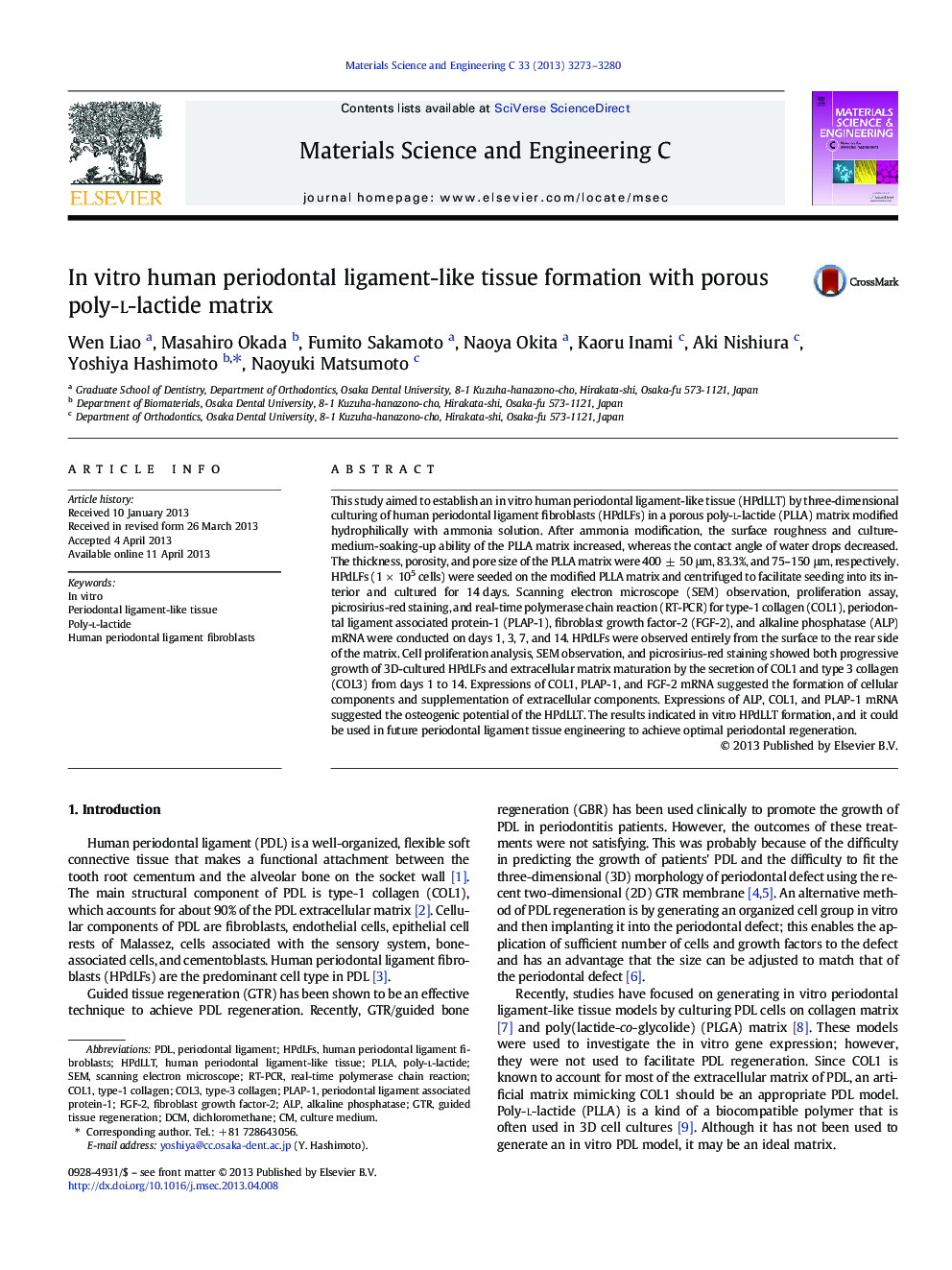| کد مقاله | کد نشریه | سال انتشار | مقاله انگلیسی | نسخه تمام متن |
|---|---|---|---|---|
| 1429174 | 987165 | 2013 | 8 صفحه PDF | دانلود رایگان |

• First report on ammonia treated PLLA matrix for in vitro human periodontal ligament-like tissue generation.
• Good combination of matrix thickness, pore size, and porosity.
• Biodegradable PLLA is also possible to be used in vivo.
This study aimed to establish an in vitro human periodontal ligament-like tissue (HPdLLT) by three-dimensional culturing of human periodontal ligament fibroblasts (HPdLFs) in a porous poly-l-lactide (PLLA) matrix modified hydrophilically with ammonia solution. After ammonia modification, the surface roughness and culture-medium-soaking-up ability of the PLLA matrix increased, whereas the contact angle of water drops decreased. The thickness, porosity, and pore size of the PLLA matrix were 400 ± 50 μm, 83.3%, and 75–150 μm, respectively. HPdLFs (1 × 105 cells) were seeded on the modified PLLA matrix and centrifuged to facilitate seeding into its interior and cultured for 14 days. Scanning electron microscope (SEM) observation, proliferation assay, picrosirius-red staining, and real-time polymerase chain reaction (RT-PCR) for type-1 collagen (COL1), periodontal ligament associated protein-1 (PLAP-1), fibroblast growth factor-2 (FGF-2), and alkaline phosphatase (ALP) mRNA were conducted on days 1, 3, 7, and 14. HPdLFs were observed entirely from the surface to the rear side of the matrix. Cell proliferation analysis, SEM observation, and picrosirius-red staining showed both progressive growth of 3D-cultured HPdLFs and extracellular matrix maturation by the secretion of COL1 and type 3 collagen (COL3) from days 1 to 14. Expressions of COL1, PLAP-1, and FGF-2 mRNA suggested the formation of cellular components and supplementation of extracellular components. Expressions of ALP, COL1, and PLAP-1 mRNA suggested the osteogenic potential of the HPdLLT. The results indicated in vitro HPdLLT formation, and it could be used in future periodontal ligament tissue engineering to achieve optimal periodontal regeneration.
Journal: Materials Science and Engineering: C - Volume 33, Issue 6, 1 August 2013, Pages 3273–3280